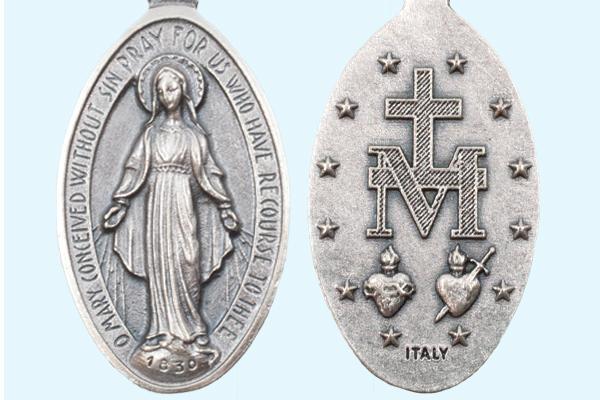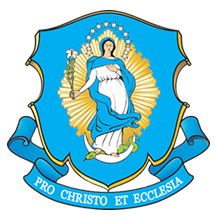
By Louise Merrie
Many Catholics wear a Miraculous Medal as a sign of their devotion to the Blessed Mother. My mother and my grandmother introduced me to the devotion as a child and I have worn a medal for many years as an adult. For me, it is a reminder of Mary's maternal love and protection, and of my consecration to her. It is also a sign to others that I am a Catholic and, as such, a means of evangelization.
We celebrate the Feast of Our Lady of the Miraculous Medal on Nov. 27, which falls this year on the eve of the beginning of Advent. As popular as the devotion is, many Catholics may not know its history and significance.
On July 19, 1830, Sr. Catherine Labouré, a young novice of the Daughters of Charity, was awakened in Paris, France, by someone calling her name. She saw a small boy, surrounded by light, who told her to go with him to the chapel on the Rue de Bac where Mary would be waiting for her. She followed the boy, believing he was her guardian angel, and soon afterwards, Our Lady appeared to her. She said to Sr. Catherine: "My child, the good God wishes to charge you with a mission." Mary told her to tell her spiritual director everything, but warned, "You will be contradicted, but do not fear. You will have grace." She told Sr. Catherine of trials that would be coming to France and the world, but she should not be afraid: "I will grant you many graces."
A week later, on July 27, a revolution occurred in France in which King Charles X was deposed. Bishops, priests, and members of religious orders were imprisoned and killed. Churches were desecrated. As Mary promised in her apparition to Sr. Catherine, the Vincentian Fathers and Daughters of Charity were not harmed.
Later that year, Our Lady appeared to Sr. Catherine on November 27. While Sr. Catherine was in the chapel with the other sisters for evening meditation, she saw Mary standing on a globe, holding a golden ball which she seemed to be offering up to God. Sr. Catherine heard her say it represented "the whole world, especially France, and each person in particular."
Our Lady was wearing rings with precious stones on her fingers; some of the stones shone like rays of light. Mary told her that the rays of light symbolized the graces she gives to people who ask for them, much like the rays emanating from Jesus in the Divine Mercy image. The jewels without rays represented the graces people neglected to request.
In the third apparition, Mary's appearance changed to show her standing on the globe with a serpent beneath one foot, with her arms down and the rays of graces descending to the world. An oval frame encircled Mary, with the words, "O Mary conceived without sin, pray for us who have recourse to thee" in gold letters. [The doctrine of the Immaculate Conception would be declared by the Catholic Church 24 years later.] Sr. Catherine heard the words, "Have a medal struck after this model. All who wear it will receive great graces; they should wear it around the neck. Graces will abound for persons who wear it with confidence." The vision changed to show the reverse side, depicting a half circle of twelve stars, with a cross at the top, a bar below it, a large letter M, and the hearts of Jesus and Mary.
Sr. Catherine was eager to have the medals made as soon as possible. However, her confessor was skeptical of the apparitions. After he met with the Archbishop of Paris and told him about Sr. Catherine's revelations, the archbishop gave permission for the medals to be made and even requested that he be sent some medals. Soon after the first medals were distributed in June 1832, they were called "miraculous" because of the many favors people received through wearing them.
Sr. Catherine was canonized for her saintly life in 1947. The Miraculous Medal Novena became a popular devotion throughout the world.
Mary's apparitions as Our Lady of the Miraculous Medal show her as a loving mother who wants us to trust in her care, and as the Queen of Heaven and Earth who is spiritually powerful and protects us through her intercession. Mary wants to give us graces and wants us to request them. These graces will enable us to persevere through any trials we experience. Mary's messages to Sr. Catherine remind us not to be afraid and to instead rely on God's protection and Mary's constant intercession.
Jesus gave us His mother as our mother and wants us to be close to her. By wearing Mary's Medal, we place ourselves under her protection as her spiritual children.
Our Lady of the Miraculous Medal, pray for us!
















